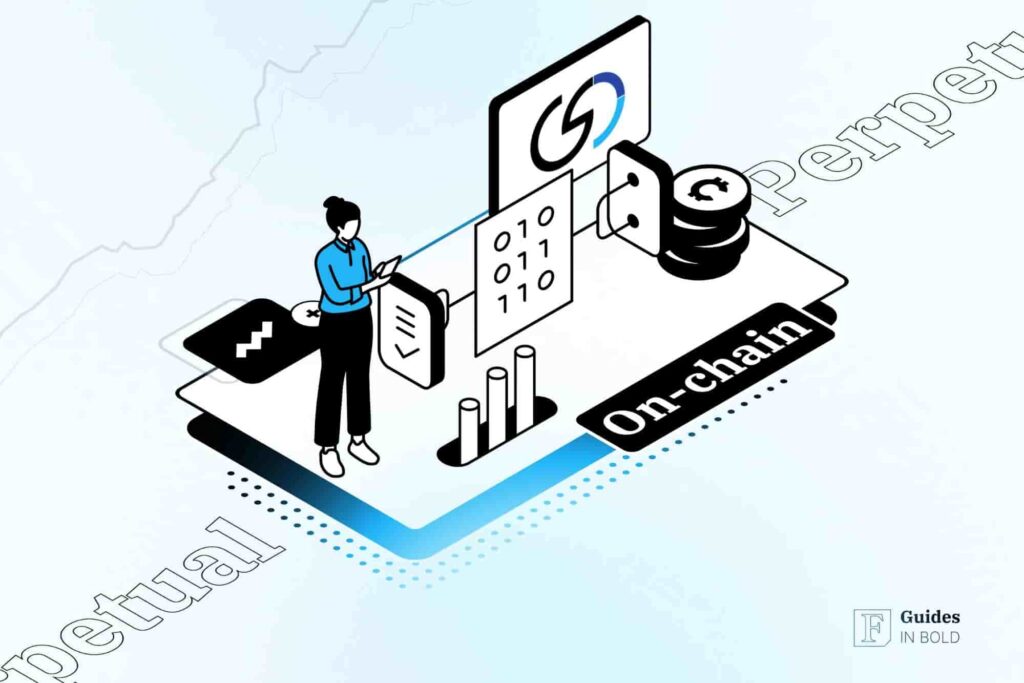Perpetual futures contracts let traders speculate on the price movements of various assets without actually owning them. Unlike traditional futures contracts, perpetual futures don’t have an expiration date, which means traders can adjust their trading strategies more quickly in response to market movements.
Here’s how to buy and sell crypto perpetual futures on-chain.
What are perpetual futures?
Crypto perpetual futures have become quite popular in digital asset markets. Today, traders frequently use them to bet on the price movements of tokens like Bitcoin (BTC) and Ethereum (ETH). In addition to having no expiration date, perpetuals are attractive for several other reasons, most notably their high leverage and increased liquidity.
How do perpetual futures work?
In essence, funding rates are recurring fees exchanged between traders (typically every eight hours). With traditional futures, on the other hand, settlement occurs only once, namely at the contract’s expiration.
There are two types of funding rates, depending on whether the perpetual futures price is above or below the spot price:
- Positive funding rate: When the futures price is trading above the spot price, long traders pay short traders;
- Negative funding rate: When the futures price falls below spot price, short traders pay long traders.
The exact amount you have to pay varies depending on the asset and exchange. However, it is usually calculated based on the interest rate and the premium index, i.e., the gap between the perpetual futures price and the spot price.
When discrepancies arise between the futures and spot markets, the funding rate creates arbitrage opportunities. Traders are thus incentivized to take positions that earn them funding payments, which helps balance out the prices.
This fee mechanism therefore, builds on the characteristically trustless nature of on-chain transactions. Likewise, by removing intermediaries and creating a regulated, peer-to-peer ecosystem, it eliminates idle cash and makes liquidity more accessible.
How to trade perpetual futures on-chain
To start trading crypto perpetual futures, you’ll first need to create an account on a crypto trading platform that supports these derivatives.
Upon registration, you’ll have to fund your account to cover the initial and maintenance margin requirements.
From there, you can choose the perpetual contract you’d like to trade and open a position, either long (buy) or short (sell), depending on your strategy..
For the sake of reference, we’ll demonstrate the registration process using Grvt, a hybrid crypto exchange powered by zero-knowledge (ZK) technology with a simple user interface that makes it accessible to the average trader accustomed to compliance and Web2-like features.
Step 1
First, head over to the GRVT homepage and click on the Start trading button (as shown below):
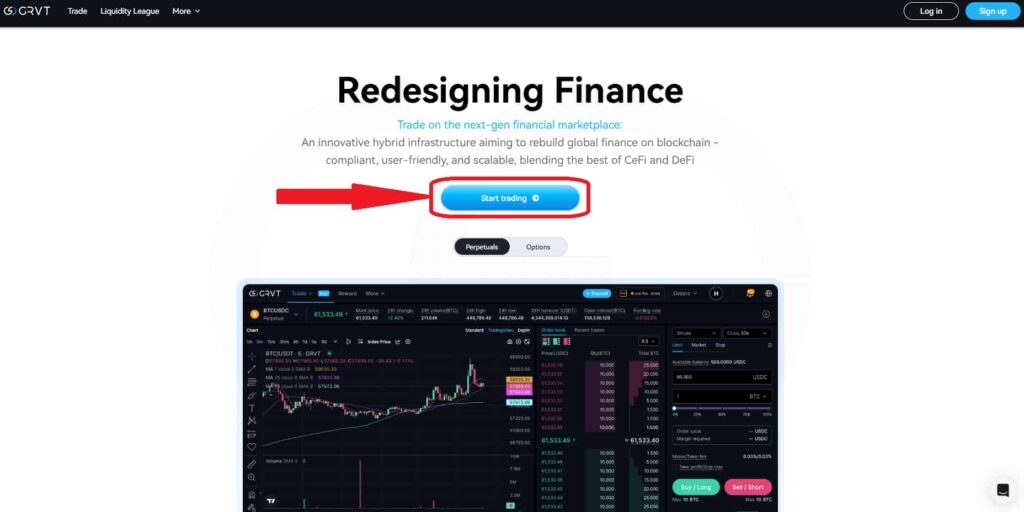
Step 2
Then, choose your preferred account type: Personal or Business. Here, we’ll choose personal, given that most traders are going to fall into that category.
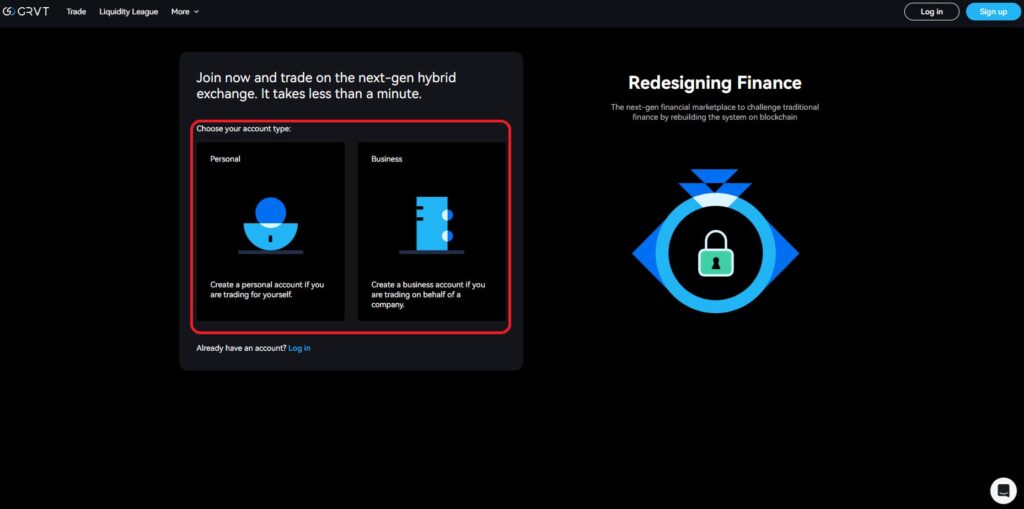
Step 3
Next, you’ll have to provide your email and provide an optional referral code if you have one. Alternatively, you can log in with your Google, Microsoft, or Apple account. We’ll choose to sign up by providing an email. Simply type your address in and click Next.
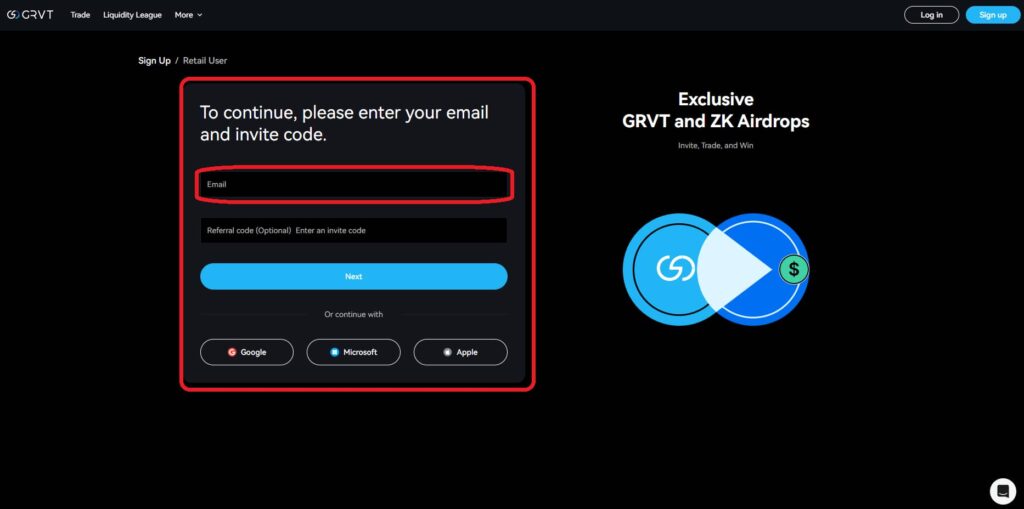
Step 4
Next, provide your personal information and set up a password:
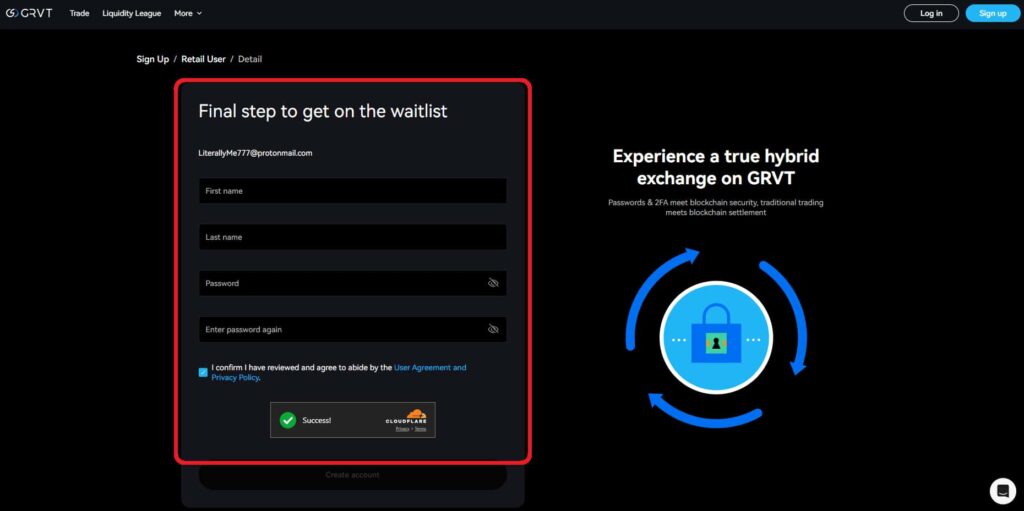
Step 5
You will receive an email with an account confirmation link. Simply head over to your inbox and click on it to be transferred to GRVT’s trading platform. There, you can click on the Verify now button on the right-hand side (as shown below) to verify your identity before you can trade:
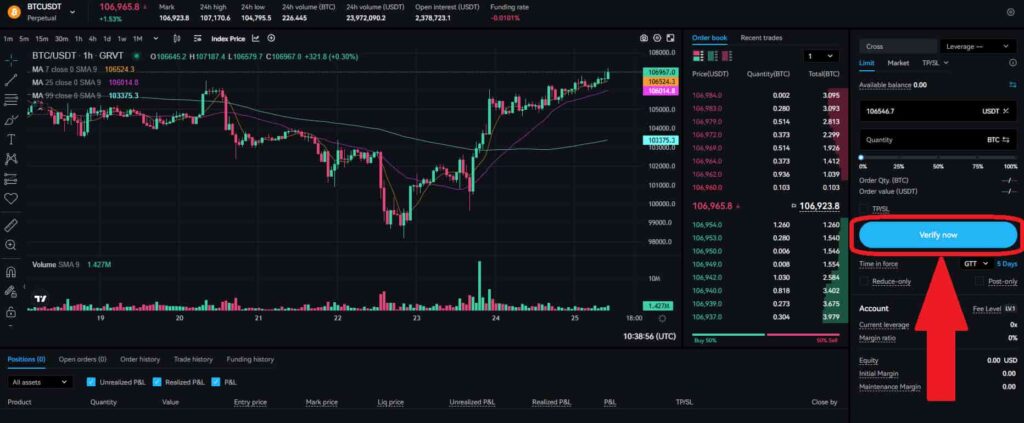
Step 6
Once you have verified your account, you can start opening long and short positions. On the right-hand side of the trading interface (as seen below), you can select order type, market type, and margin, as well as choose whether you want to go long or short.
Here, we have selected cross-market trading with a 10x leverage, and we’ve selected the limit order.
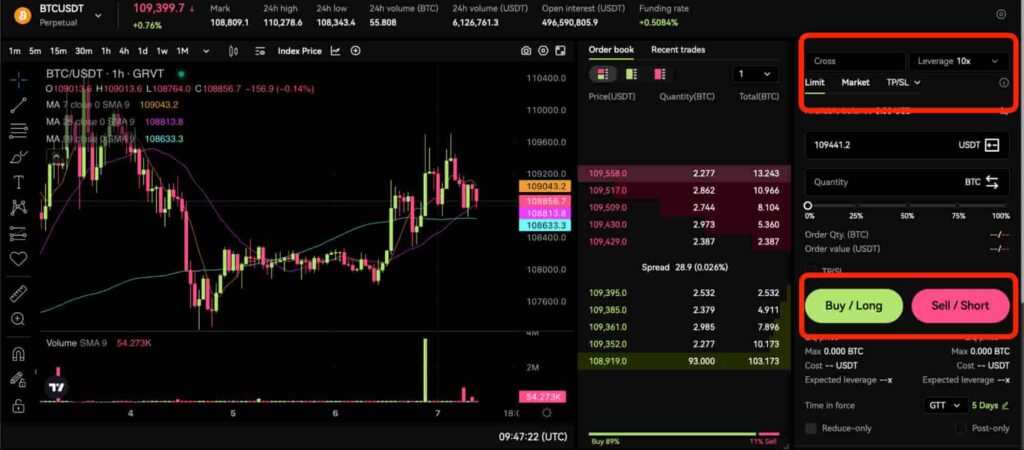
Example trade
As an example, we can imagine a Bitcoin perpetual futures trading scenario:
- Starting position: Let’s say you have $5,000 in your trading account and use 10x leverage. That means that you effectively cover a $50,000 position ($5,000 X 10). At a Bitcoin price of, say, $100,000, this allows you to buy 0.5 BTC;
- Funding rate: Now, let’s imagine you’re taking a long position since you’re predicting that BTC is going to rise. If we assume the funding rate is 0.02% every 8 hours, you’ll pay this funding fee to short traders for holding the position if the futures price is above the spot price, as explained in the funding rates section above;
- BTC movement: If BTC rises to $105,000, your position will be worth $52,500 (0.5 BTC X $105,000). That means a profit of $2,500, or a 50% gain on your initial $5,000. However, if BTC drops to, say, $95,500, your $50,000 position will drop to $47,500. That is a $2,500 loss, meaning you are down 50% on your initial $5,000 equity. If the maintenance margin requirement is, for example, 5% of your position, in this case $2,500, your total equity must not drop below $2,500 if you don’t want your position to be liquidated;
- Funding fees: If you keep profiting from your long position, you will have to keep paying the funding fees. Since the rates are 0.02% in this scenario, you will pay $10 every 8 hours on a $50,000 position, or $30 daily.
Why trade perpetual futures?
Flexibility is one of the biggest advantages of perpetual futures. Indeed, traders can open or close positions at any time without worrying about expiry dates. As such, perpetual futures are well-suited for short-term speculation and long-term strategies alike.
However, this flexibility has some drawbacks. For instance, since positions can theoretically remain open forever, traders must actively manage them. This means perps are not an ideal choice if you are looking for passive income ideas. Likewise, while high leverage can amplify your gains, it can also backfire and result in heavy losses, as volatile crypto markets often come with sudden price swings.
The appeal of perpetual futures thus rests primarily on:
- High-risk, high-reward trading: Built-in leverage can lead to substantial gains or losses;
- No expiration date: You can hold positions as long as needed;
- 24/7 markets: Perps are available anytime in crypto markets;
- Lower fees: Fees are lower when trading perps compared to those in the spot market;
- Short positions: Short selling allows traders to benefit in both rising and falling markets.
Conclusion
Crypto perpetual futures are gaining popularity due to their flexibility, built-in leverage, and 24/7 market access. Unlike traditional futures, these contracts have no expiration date and use a funding rate system to stay aligned with spot prices. This structure opens up new opportunities for traders to speculate on price movements, hedge existing positions, and diversify their strategies.
However, it’s always essential to understand the mechanics of the asset, like funding rates and leverage, before diving in.
Disclaimer: The content on this site should not be considered investment advice. Investing is speculative. When investing, your capital is at risk.
FAQs about crypto perpetual futures
What are crypto perpetual futures?
Crypto perpetual futures are derivative contracts that allow traders to speculate on the future price of a cryptocurrency without an expiry date.
Are perpetual futures legal in the US?
No, perpetual futures are not yet fully available in the US.
How to trade perpetual futures?
You can trade perpetual futures on cryptocurrency exchanges such as Grvt, Coinbase, Binance, etc.
Can you trade perpetual futures on-chain?
Yes, you can trade perpetual futures on-chain. They are mostly available for major cryptocurrencies like Bitcoin (BTC), Ethereum (ETH), and a few others.
How are perpetual futures different from regular futures?
Traditional futures have a set expiration date, after which the contract is settled. Perpetual futures, on the other hand, do not.
What is the funding rate?
In the context of perpetual futures, the funding rate is the recurring fee exchanged between traders. Depending on market conditions, either long or short position holders pay the rate.
